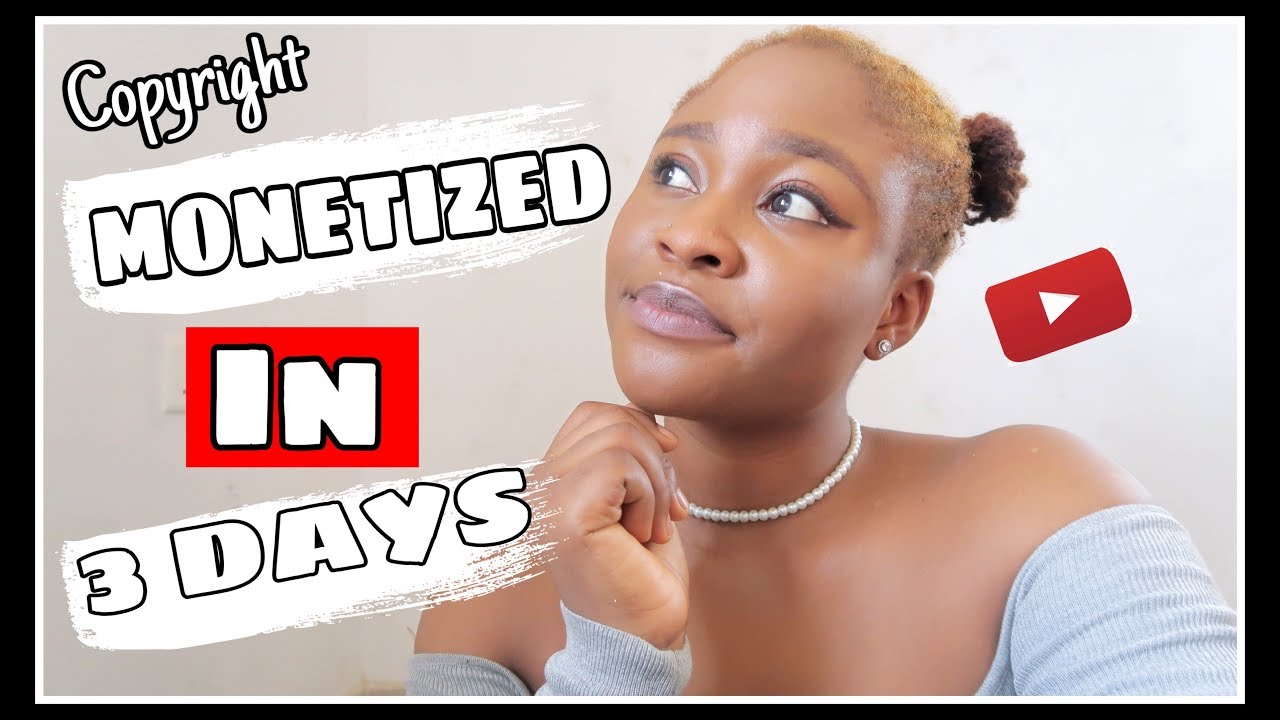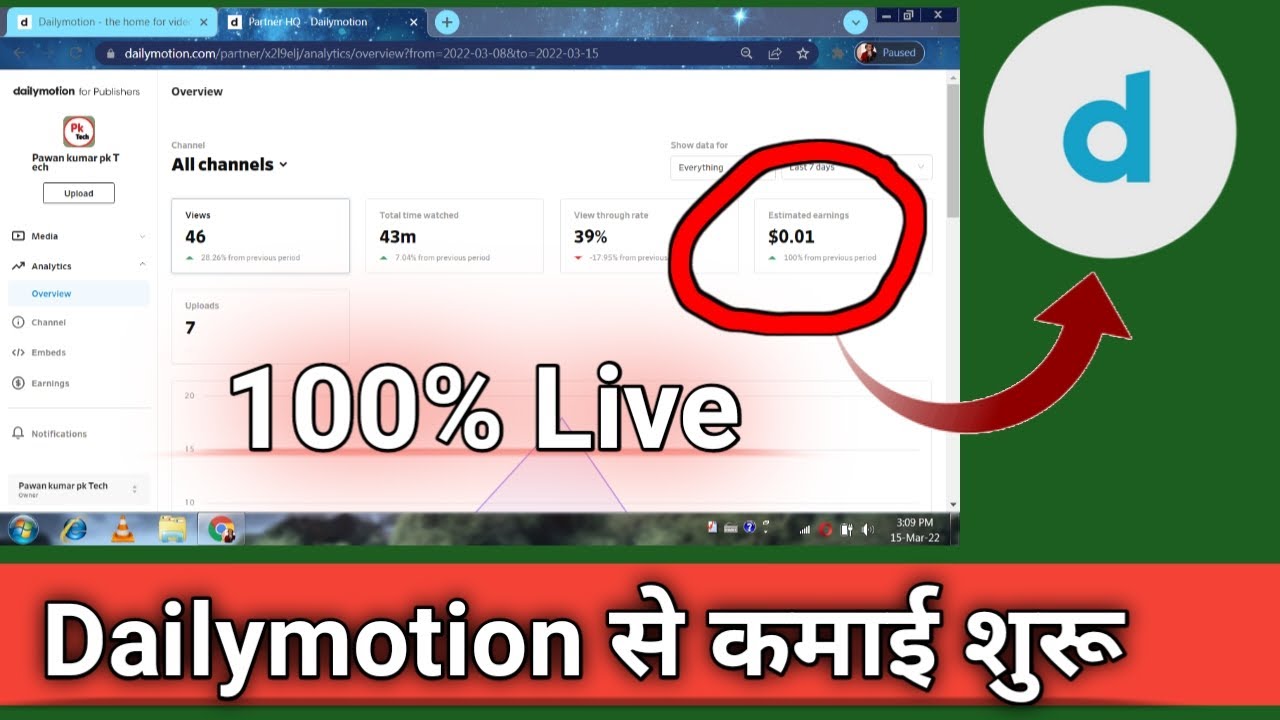In today's digital landscape, content creators have a plethora of platforms to choose from when it comes to monetizing their videos. Among the most popular ones are Dailymotion and YouTube. These platforms not only empower creators to share their work with the world but also provide various ways to earn money from it. However, each platform has its unique advantages and challenges, making it essential for creators to understand how monetization works in order to maximize their revenue potential.
Overview of Dailymotion's Payment System

Dailymotion, often seen as a competitor to YouTube, has carved its niche in the video-sharing arena. While it doesn’t boast the same level of user traffic as YouTube, Dailymotion presents creators with a distinctive payment structure and monetization opportunities. Let’s dive into the specifics!
Monetization Options
- Ad Revenue: Dailymotion operates a revenue-sharing model where creators can earn money through advertising. Creators are paid based on the number of views their videos receive, as well as the engagement generated.
- Partnership Programs: Joining the Dailymotion Partner Program allows creators to unlock additional monetization features, including customized advertising and improved revenue rates.
- Affiliate Marketing: Many creators use Dailymotion to promote affiliate products, earning commissions on sales made through unique links shared in their videos.
Payment Structure
Dailymotion pays creators through a profit-sharing model. The following are some key points to consider:
| Payment Threshold | Payment Frequency | Revenue Share |
|---|---|---|
| $100 | Monthly | 60% to the creator |
To summarize, Dailymotion offers a flexible payment system that's enticing for creators. From ad revenue to partnership programs, the opportunity to monetize videos on this platform is admirable. With a competitive revenue share of 60% for creators, Dailymotion presents itself as a viable alternative to the powerhouse that is YouTube.
Also Read This: Is Dailymotion Safe from Viruses in 2019? A Review of Its Virus Protection
Overview of YouTube's Payment System

YouTube has established itself as one of the top platforms for creators to share their content and get paid for it. The payment system can be a bit intricate, but let's break it down. First and foremost, creators earn money primarily through ads displayed on their videos, and this income is facilitated through the YouTube Partner Program (YPP).
To become a part of the YPP, a creator needs to meet certain eligibility criteria, which include:
- A minimum of 1,000 subscribers
- At least 4,000 watch hours over the past 12 months
- A linked AdSense account
- Compliance with all YouTube policies and guidelines
Once accepted, creators can monetize their videos by allowing ads to be displayed. The earnings from these ads depend on various factors like viewership, engagement, and the nature of the ad itself. Here’s a quick breakdown of some of the monetization avenues available for creators on YouTube:
| Monetization Stream | Description |
|---|---|
| Ad Revenue | Income generated from ads shown before, during, or after videos. |
| Channel Memberships | Fans can pay a monthly fee for exclusive content and perks. |
| Super Chat & Super Stickers | Enabled during live streams, fans can pay to have their messages highlighted. |
| YouTube Premium Revenue | Creators earn a portion of subscription fees paid by Premium members who watch their content. |
In a nutshell, YouTube's payment system offers multiple avenues for creators to earn money, but it's essential to build an audience and produce engaging content to maximize revenue.
Also Read This: Don’t Just Sit There, Watch the Full Video on Dailymotion
Key Differences in Payment Structures

When comparing YouTube and Dailymotion's payment structures, a few key differences set them apart. Understanding these can help creators choose the platform that aligns better with their financial goals and audience engagement strategies.
Here are some of the primary distinctions:
- Monetization Thresholds: YouTube requires creators to meet specific eligibility criteria to monetize their content, whereas Dailymotion has less stringent requirements, allowing creators to start earning sooner.
- Revenue Share: YouTube typically operates on a 55/45 revenue split, favoring the platform with 45%, while Dailymotion offers a more creator-friendly split of 70/30, allowing creators to take home 70% of ad revenue.
- Ad Formats: YouTube provides a wider array of ad formats (like skippable ads, non-skippable ads, bumper ads) compared to Dailymotion, which primarily focuses on standard ads.
- Audience Size: YouTube boasts a vastly larger audience, which can lead to higher potential earnings through ad impressions. However, Dailymotion may have niche audiences that engage deeply with content, offering an alternative advantage.
- Payment Schedules: YouTube typically pays creators monthly, while Dailymotion's payment schedule can be less predictable, depending on the amount of accumulated revenue.
In conclusion, while both platforms offer unique opportunities for monetization, the choice between them largely depends on the creator's goals, content type, and audience demographic. Understanding these differences can empower creators to make informed decisions about where to invest their time and resources.
Also Read This: Easiest Methods for Downloading Dailymotion Videos to Your Computer
Factors Influencing Earnings on Each Platform
When it comes to earning money as a content creator on platforms like Dailymotion and YouTube, several factors come into play that can significantly impact your revenue. Understanding these can help you optimize your content strategy for better earnings.
- Ad Revenue: This is a major part of your income on both platforms. YouTube offers a robust AdSense program where creators earn from ads displayed on their videos. Dailymotion, while also having an ad revenue model, often has lower CPM (cost per thousand impressions), which can affect overall earnings.
- Audience Size: Simply put, more views typically mean more earnings. YouTube's algorithm works to promote content that resonates with audiences, increasing the chances of reaching a larger viewer base. Dailymotion, on the other hand, has a smaller user base but can still deliver high engagement on niche content.
- Content Niche: Some topics attract more advertisers than others. Popular niches, like gaming or beauty, might see higher CPM on YouTube. Conversely, Dailymotion may provide opportunities in less saturated niches where you could stand out.
- Engagement Metrics: Both platforms value engagement. On YouTube, likes, comments, and shares can boost your video visibility, leading to more ad impressions. Dailymotion emphasizes viewer retention. Higher retention means your video is more likely to be promoted.
- Monetization Options: YouTube has multiple monetization options, including Super Chats and memberships. Dailymotion offers a similar model but tends to be less diverse. The more ways to monetize your content, the higher your total earnings can be.
Also Read This: Creating a Digestive System Model for Projects: Watch on Dailymotion
Pros and Cons of Using Dailymotion for Creators
Dailymotion is often overshadowed by more prominent platforms like YouTube, but it has its unique advantages and disadvantages for creators. Let’s break them down!
| Pros | Cons |
|---|---|
|
|
Ultimately, while Dailymotion has its strengths for niche content creators, it also has drawbacks that could impact earning potential and audience reach. It’s essential to weigh these factors against your content strategy and goals to decide if it’s the right platform for you.
Also Read This: Elegant Dining: Eating Rice with a Fork and Knife Made Simple
Pros and Cons of Using YouTube for Creators
YouTube has become a household name when it comes to video content creation. However, like any platform, it comes with its own set of advantages and disadvantages. Let’s break them down!
Pros of Using YouTube
- Massive Audience Reach: With over 2 billion logged-in users, YouTube provides creators access to a vast global audience.
- Monetization Options: Creators can earn revenue through ads, channel memberships, Super Chats, and affiliate marketing.
- Community Engagement: YouTube allows creators to engage with their audience through comments, live streams, and community posts.
- SEO Benefits: Being owned by Google, videos can rank high in search results, making discoverability easier for creators.
Cons of Using YouTube
- Ad Revenue Dependence: Creators often find themselves reliant on ad income, which can be inconsistent based on changes in policies.
- Strict Policies: YouTube has strict community guidelines and monetization rules that can lead to demonetization or account bans.
- High Competition: The sheer number of creators makes it challenging to stand out, requiring exceptional content and marketing efforts.
- Algorithm Changes: Regular changes to YouTube’s algorithm can significantly impact video visibility and engagement rates.
Conclusion: Which Platform is Better for Creators?
So, you’ve made it to the million-dollar question: which platform is better for creators, YouTube or Dailymotion? The answer isn’t one-size-fits-all; it really depends on your content, audience, and goals.
YouTube offers a more extensive reach and diverse monetization options, making it a fantastic platform for those looking to grow a large audience and build a brand. However, be ready to navigate its complex policies and fierce competition.
On the other hand, Dailymotion provides a friendlier environment for niche content and can offer better engagement rates with less competition. It may not have the massive audience of YouTube, but its community can be more tight-knit, which is great for creators focusing on specific topics.
Ultimately, it boils down to where you feel most comfortable and how you want your content to be received. Consider experimenting with both platforms to see which resonates more with you and your audience!
 admin
admin








